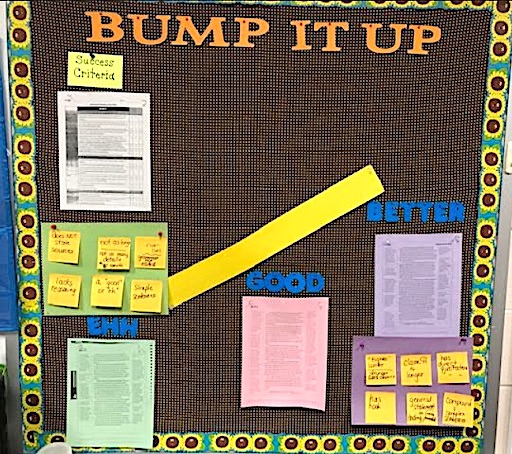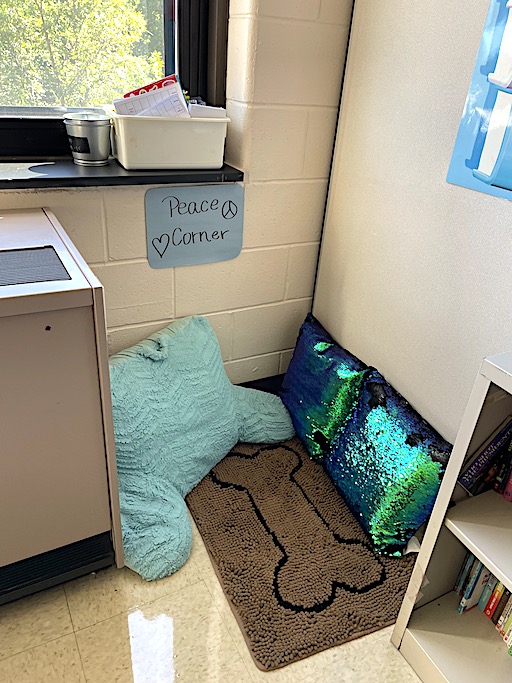Classroom Moves That Stimulate Kids’ Learning
By Kelly Owens

A new year is upon us! This is a golden time for marketers. Every nation that follows the Gregorian calendar gets this refresh on the exact same day – January 1. And it’s the same ritual each year: reevaluate fitness, finances, and friend and family relationships.
Optimism is in the air, and it’s easy to get caught up in DIY improvements. But are they a waste of time? As many gym goers know, parking lots swell in January, only to quickly taper off. According to Forbes (2019), a whopping 64% of New Year’s resolutions will be abandoned after one month.
Why Resolutions May Not Stick
The newness of 1/1 feels empowering. We quickly proclaim overhauls that sound great, but aren’t rooted in our core purpose. Or we feel pressured to pick a should – something others think we should do.
It’s healthy and normal to want to better ourselves. Goals are good. However, if we don’t stop to ask why, it may not yield desired results. The daunting task we assign ourselves could ultimately zap motivation and leave us feeling more dissatisfied than before.
A Useful Alternative to New Year’s Resolutions
Teachers and students spend many weekday hours at school. It’s a place which can strongly impact attitudes, behaviors, and opportunities for achieving goals. Think of all of the places you’ve lived throughout your life. How has each shaped your lifestyle and experiences?
In my early college years, I didn’t have a car. As a result, I frequented campus social events with a close-knit friends group. Later, on my own as a new teacher, I resided in an apartment house nestled near a bookstore. A library was a short stroll away. Now I live in a community bordered by parks with endless biking and hiking trails.
Each living experience offers different benefits and downsides. What one place lacks in conveniences, another offers in opportunities for personal growth. Each has its own theme: enjoying campus life with good friends, a tiny town for literature lovers, and an active lifestyle city.
Now, connect this idea to your classroom. Bestselling author Stephen Guise suggests we do all we can to make our environment conducive to our goals. A place shapes us. Subtle changes in our surroundings can offer more restorative benefits than those overwhelming New Year’s resolutions. And remember, take small manageable steps. If you want to run a marathon, you don’t start by going out one day and running twenty-six miles.
Intentionally Plan Your Learning Place
“I do not teach anyone, I only provide the environment in which they can learn.” This quote, often attributed to Albert Einstein, underscores the importance of creating a successful learning place.
Part of intentional teaching is making design decisions that are goal-friendly and include the best mix of social, emotional, and instructional elements. Goal-resistant environments could squash learning. Check out these ways to construct your classroom with an awareness of the human senses.
► A Picture (or Bulletin Board) is Worth a Thousand Words
What do learners see when they look around the room? If you are touting the benefits of a growth mindset, displays should align with that message. A Bump It Up bulletin board (like the one shown below) reminds students of the journey mindset needed to reach a goal. Students will be more likely to persevere in the face of challenges if they have an awareness of the hurdles to be conquered along the way.
► Eliminate Stress!
Encourage greater self-regulation of behaviors to prevent disruptions to learning. Designate a calming space in the classroom where students can pause and think about feelings, then ready themselves to be available to learn again.
My colleague Courtney Bliesath designed a Peace Corner (shown below), including items designed to offer multisensory comfort. For example, sequin pillows allow you to feel the changing tide of sequins when you swipe your hand in one direction, then in reverse.
► Tunes for Teaching
Some research (Vollrath, 2023) affirms what many of us have experienced: listening to music is associated with lower levels of stress and boredom. Tunes may even amp up concentration! But music that moves us is highly individual and situation dependent.
Help students find their auditory happy places by having them write playlists on cards. Choose two songs for each of three categories: motivation, focus, and relaxation. Then strategically play songs throughout the year to elicit moods matched to the learning context.
► Fidgets to Focus
Tactile sensory tools can increase focus and attention, while also reducing stress. When I use them during class, I always make sure to call them tools, not toys. Posted rules help with clarifying their use.
Fidget choice is highly individualized. Noiseless fidgets appeal to some, and quiet clicking helps others. Regardless of the type, fidgets should be used purposefully and not distract the user or classmates.
► Foster Flow
How do students navigate around the room? Seating arrangements take up a lot of real estate – particularly an oversized teacher desk. I’ve increased available space for movement in my classroom by ditching my desk. It may be tough to pare down a fur baby photo shrine, but clearing clutter keeps the room more student-oriented.
I also take design cues from the Apple Store. There isn’t a central command-center desk for customers to seek out employees. Rather, customers tinker with products at tables. Apple Geniuses approach customers to provide assistance while products are in their hands. Now that’s a customer-centric experience!
► Bring Nature Indoors
It sounds silly, but a $3.99 plant once had a place on my class roll call. During virtual teaching, I bought myself some plant company from a local nursery. The students embraced it, named it, and then quarreled about who would water it once we were all in the classroom together.
Charles Phillip, as the plant came to be known, ended up being more than a soft touch next to digital devices. There’s a slew of research out there supporting indoor plants’ ability to calm our stress levels. Scents of some plants, like lavender, are associated with calm and relaxation. But to be sensitive to allergies, I’ve also used fake plants. Authors Audrey Vernick and Liz Garton Scanlon speak best about the rewards of our green classroom pets in The World’s Best Class Plant, a picture book that works great in the middle grades!
Follow Through During the New Year
This January, don’t hastily jump on the bandwagon with the latest decorating fad. Observe your learning space. Is it limiting or limitless? Design a place where students want to learn and grow. Your room environment may be one of the most powerful tools in your teaching toolbox.
References
Graham, D. (2019, December 27). Why New Year’s Resolutions Don’t Work (And What You Can Do Instead!). Forbes.com.
Guise, S. (2017, December 29). Drop Your New Year’s Resolution and Change Your Environment Instead. Medium.com.
Vernick, A., & Scanlon, L. G. (2023). The World’s Best Class Plant. G.P. Putnam’s Sons Books for Young Readers.
Vollrath, D. (2023, November 13). Tapping Into the 5 Senses to Support Students with Disabilities. Edutopia.org.
Kelly Owens is a literacy interventionist who helps middle graders overcome past literacy struggles by building stamina, confidence, and a greater love of learning. As a teacher with over 29 years of experience, she has proudly represented Hillsborough Township Public Schools as a New Jersey Governor’s Teacher of the Year.
Kelly also co-created Buddies for the Birds, which was featured on Emmy Award-winning Classroom Close-up NJ. Kelly earned her Ed.M. from Rutgers University and her Reading Interventionist and Wilson Ⓡ Dyslexia Practitioner Certifications through Saint Joseph’s University. Additional writing credits include published work with The King School Series (Townsend Press), The Mailbox magazine, and MiddleWeb.

































